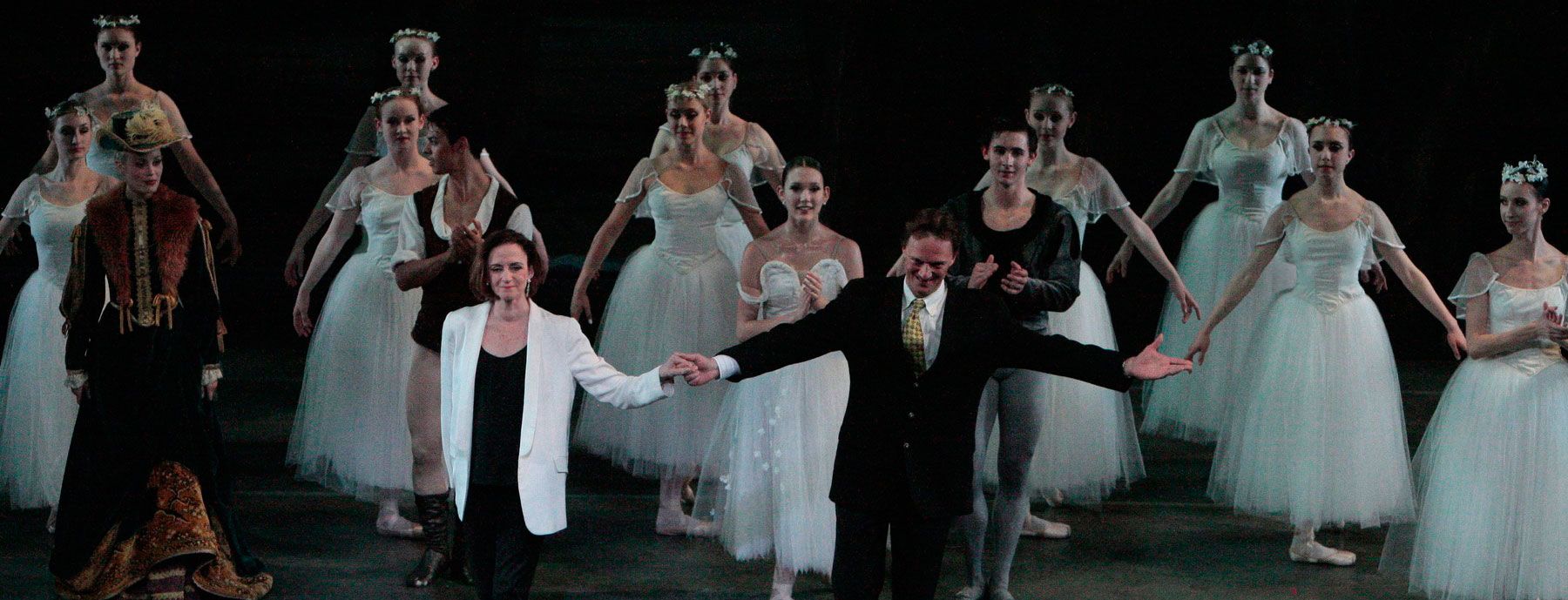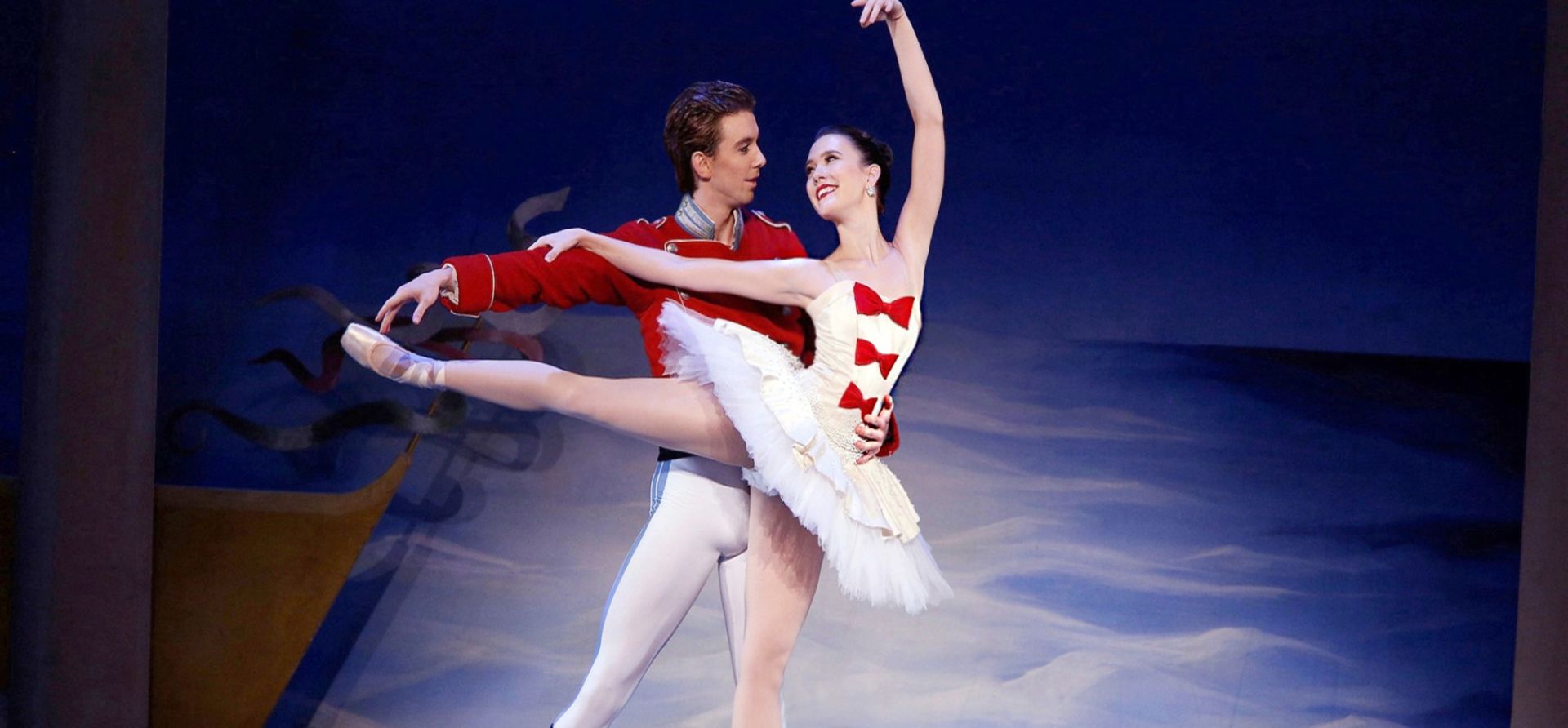Magic is made in a seemingly nondescript building in an industrial strip in West Los Angeles. Inside, the dancers of Los Angeles Ballet are rehearsing for an upcoming production of Giselle.
Now entering its 10th season, Los Angeles Ballet has overcome nearly insurmountable odds to firmly establish itself in a city where other dance companies—including a previous, different version of Los Angeles Ballet, directed by John Clifford, and New York’s renowned Joffrey Ballet—have failed. Launched in 2005, the company began performing in 2006, and in the intervening decade Los Angeles Ballet has established itself as a glittering facet of cultural life in Southern California.
Los Angeles Ballet is the shared artistic vision of a married couple, Thordal Christensen and Colleen Neary. The retired ballet stars bring with them a treasure trove not just of experience and talent but also the more intangible but equally valuable elements of history and tradition, which they are generously imparting to a new generation of dancers and audiences alike.
Dance runs deep in the Christensen/Neary family’s DNA. Their son, Erik, dances with Los Angeles Ballet, and their daughter, Helena, is studying with the prestigious Pacific Northwest Ballet School in Seattle.
Their dance resumes are formidable. Colleen, a Miami native, studied at The School of American Ballet in New York and danced with New York City Ballet under the direction of legendary choreographer and ballet master George Balanchine, becoming the quintessential exquisite and aloof Balanchine ballerina. Colleen went on to dance with French choreographer Maurice Bejart’s Ballet du XXe siècle in Paris and later with Pacific Northwest Ballet in Washington.
George Balanchine anointed Colleen Neary as his standard-bearer and guardian of his artistic legacy when he named her a répétiteur tasked with teaching his choreography and style to a new generation. The George Balanchine Foundation relies upon her artistic instincts and muscle memory to preserve the heritage of “Mr. B.”
Her husband, Thordal, has had an equally stellar career in dance. Born in Copenhagen, he began his training at The Royal Danish Ballet School before moving to the U.S. to study at The School of American Ballet. He performed with New York City Ballet and Pacific Northwest Ballet before returning to his native Denmark to become artistic director of The Royal Danish Ballet. Ultimately Thordal was knighted by Queen Margrethe II of Denmark for his outstanding service to Danish culture.
Although they have retired from the stage, Colleen and Thordal maintain the highly disciplined physical charisma of dancers. They are both tall and lithe, and in rehearsal they communicate with their company through a series of seemingly small but eloquent gestures, as principal dancers Julia Cinquemani (Giselle), Ulrik Birkkjaer (Albrecht) and Kate Highstrete (Myrta) and the corps de ballet rehearse the eerie and gothic Giselle. A lifted eyebrow, a finger snap, a small hand gesture are all they need to convey their instructions to the company.
Ballet is an incremental search for perfection. The big, athletic moves—seemingly endless arabesques, dramatic leaps, rapid-fire turns and heart-stopping lifts—grab the audience’s attention. But even the tiniest gestures—the placement of a hand or the tilt of a dancer’s head—communicate volumes in the language of eloquent movement.
Founding a classical ballet company at a moment when all of the arts are struggling, competing for shrinking or even vanishing philanthropic dollars—and ballet specifically seemed to be drawing smaller and less dedicated crowds—was a daring decision. But Thordal and Colleen took a judicious, carefully measured approach.
“We’re filling a void that existed here,” says Thordal. “LA loves dance and supports dance. We’ve seen such good growth, and there is potential for more. When you start something new, you always encounter skepticism at first. We’ve taken a very careful, very measured approach—building our company and our audience slowly. We have a great board of directors and wonderful patrons who have been very good to us, very generous. And we are very careful with the money they raise. We live within our budget.”
Los Angeles Ballet does not perform with a live orchestra like some of its counterparts in New York City and around the world. It is not unusual for smaller dance companies to perform to pre-recorded music; some of the most acclaimed dance companies in the world perform to recorded soundtracks.
“We would love to work with a live orchestra,” says Thordal. “We want to work with live musicians eventually. It’s very exciting for the dancers as well as for the audience, but we’re just not at that point yet.”
Los Angeles Ballet is remarkably diverse for a classical ballet company, reflecting the cosmopolitan character of the city. The level of available talent for their nascent company was exciting, and eight years ago Colleen and Thordal started a dance school to teach local dancers and to continue the rigorous training necessary to maintain the company’s impeccable polish.
“There are a lot of classically trained dancers in America,” Thordal explains. “We hold auditions in Los Angeles, New York and Seattle.”

Colleen continues his thought. “Our dancers come from all over the world,” she says. “We have dancers from Australia, China and Korea, as well as the U.S.”
Los Angeles Ballet is not a resident company, like New York City Ballet headquartered at Lincoln Center, so they do not have a home theatre. Instead, the company performs at a series of venues scattered around Southern California, such as UCLA’s Royce Hall, the Alex Theatre in Glendale, the Valley Performing Arts Centre, the Broad Theatre in Santa Monica and the Redondo Beach Performing Arts Center. This year Los Angeles Ballet will perform at a new venue, presenting its version of The Nutcracker at the Dolby Theatre in Hollywood.
“We want to bring ballet to the different communities,” Colleen explains. “We don’t want it to be something so inaccessible that you have to travel to some distant destination to see it. We want people from all over Southern California to be able to see us easily. Royce Hall is convenient for the Westside. The Alex Theatre is a short drive for people from Pasadena or San Marino. People in the South Bay can see us in Redondo Beach without having to fight the traffic into Downtown LA.”
As part of their community outreach policy, Los Angeles Ballet offers discounted tickets to veterans and sets aside blocks of free tickets for underprivileged children. The company performs an impressive range of classic and contemporary works: the traditional, 19th-century ballets blancs like Swan Lake and Giselle, classic 20th-century Balanchine repertory, and newer works by American and European choreographers like José Limón and Jiří Kylián.
“The three pillars of our company are the classics, the Balanchine repertory and new dances created for our company,” Colleen explains. “Our dancers move easily between the classics like Swan Lake and Sleeping Beauty and newer works. We have 18 Balanchine ballets in our repertory.”
This season, Los Angeles Ballet is concentrating on the classics, presenting Giselle, Don Quixote and Romeo and Juliet—all popular with local audiences. “It’s easier to sell tickets to a ‘big ballet’ than an evening of several shorter pieces,” Thordal explains.
Los Angeles is filled with small, intimate performance spaces and cavernous venues like the Dorothy Chandler Pavilion and the Shrine Auditorium. Even the Hollywood Bowl and The Greek Theatre have hosted major dance companies. But medium-sized houses are harder to book because there are fewer of them, and they are much in demand.

“We do well in houses that seat between 1,200 and 1,800 people,” says Thordal. “Smaller houses, like The Broad in Santa Monica, don’t work as well for us. We are able to fill bigger theatres.”
Like many dance companies around the world, Los Angeles Ballet has made an annual tradition of staging the magical holiday classic, Tchaikovsky’s The Nutcracker. Launching the holiday festivities is their annual “Nutcracker Tea,” a popular event that allows Los Angeles Ballet’s youngest fans to enjoy sweet treats and mingle with their favorite characters from the ballet, with all the dancers greeting their young fans in costume.
“It’s a very family-friendly event,” Colleen says with a smile. “It’s a chance for kids to meet the dancers and take pictures with them.”
The Nutcracker was the first ballet the company ever performed, and as such it holds a revered spot in its repertory. Los Angeles Ballet’s version of the 19th-century classic has been tweaked a bit, in honor of the company’s home.
“It’s tailor-made for Southern California,” Colleen explains. “Our version is set in California around 1900. Our amazing set designer, Catherine Kanner, created a beautiful, Spanish-style hacienda. In the second act, when the action moves to the Land of Snows, our version is set high in the Sierra Nevadas, and the Land of the Dolls is Santa Monica.”
This year Los Angeles Ballet is adding Palm Desert to the list of cities where they will perform The Nutcracker.
Wherever they perform, the company gives its audiences a powerful sense of being transported by the music and the dancers’ ethereal grace. It’s the enchantment of ballet.
Colleen says, “When the lights go down and the curtain goes up and the music begins, the audience responds.”
Written by Lynn Morgan

















